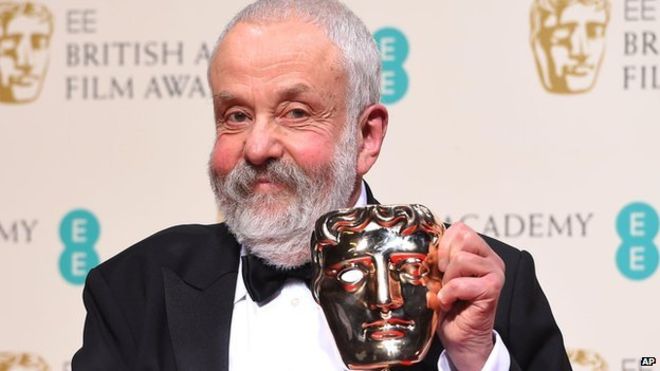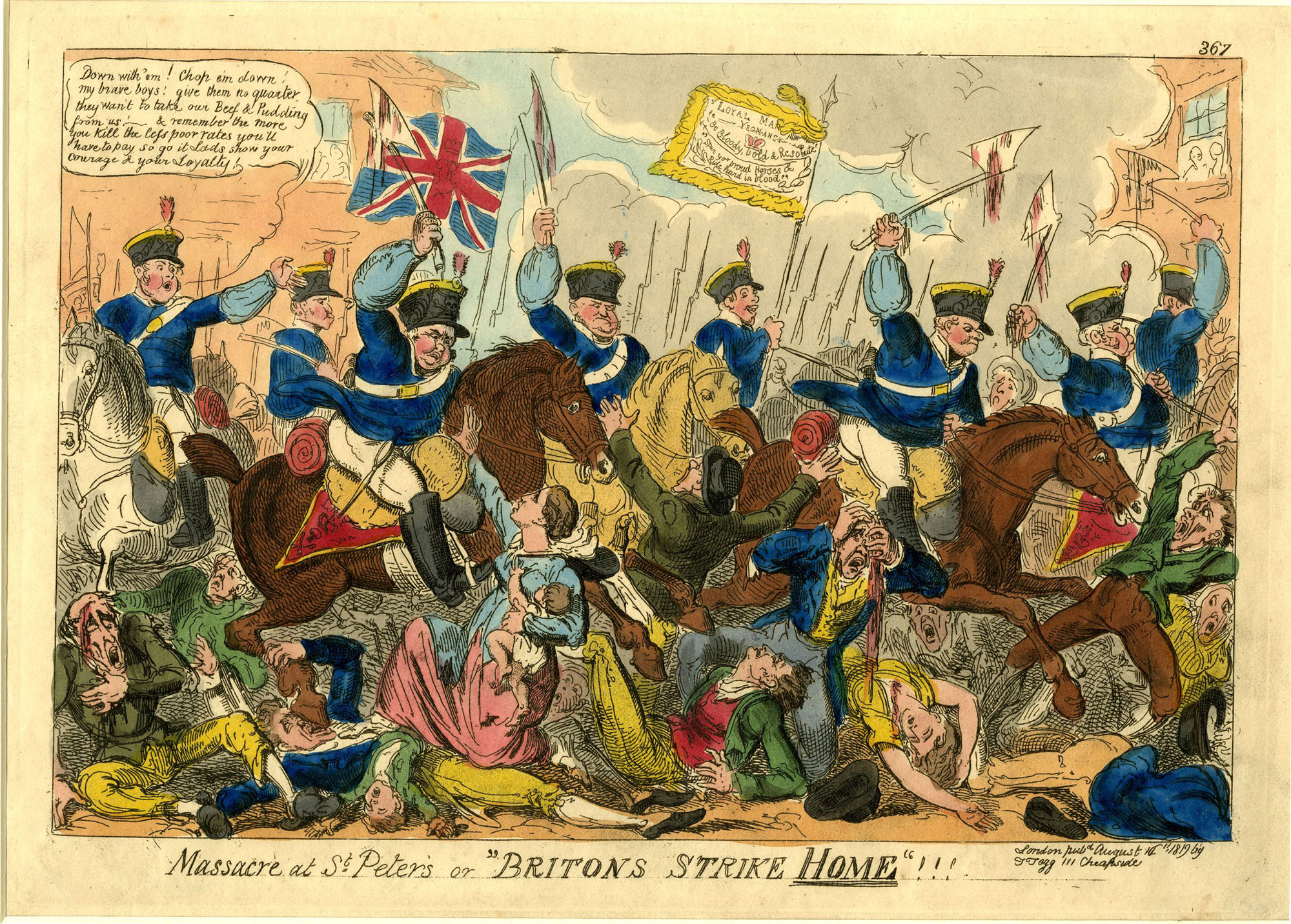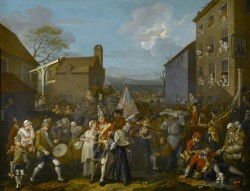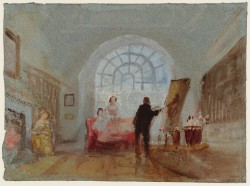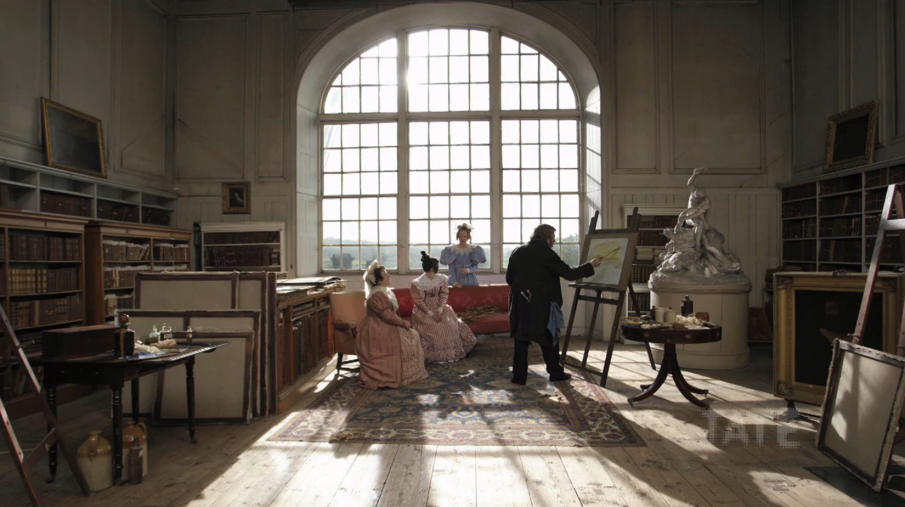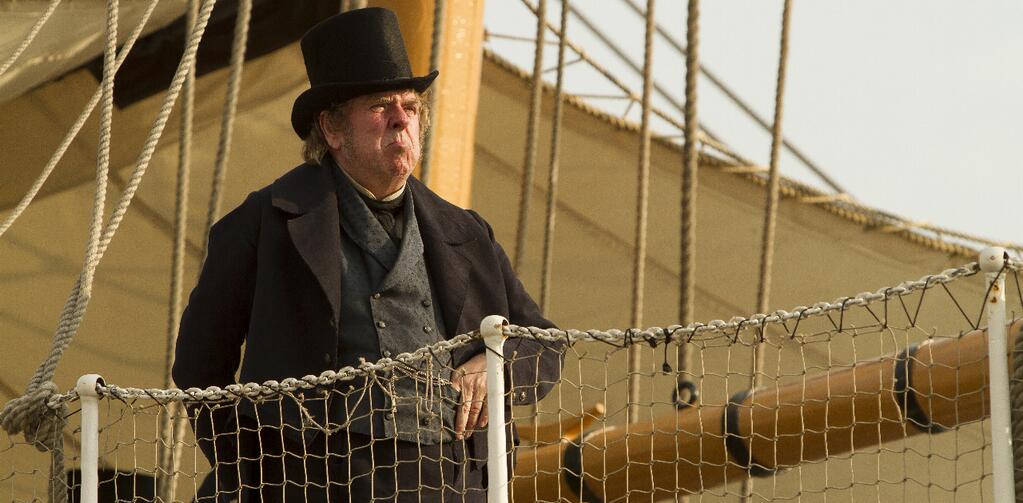
Here’s my article for The Guardian, Friday 31 October 2014:
“On a sunny afternoon in December two years ago, the cast and crew of the film Mr Turner – then only known as Untitled 13 – gathered in central London for a read through. Only there was no read through, because there was no script.
Mike Leigh’s film-making process is intensive and collaborative, with character, action and dialogue gradually emerging from months of research, discussion and improvisation – and he told us that this method is broadly the same whatever the subject. It was a process that would develop over six months of rehearsals, and a four-month shoot.
At the initial stage there was a lot of reading (the books on JMW Turner alone can be measured by the yard), and site visits and dossiers to be created – of Turner’s family, partners, fellow artists, friends, patrons, associates – out of which the time span of the film is settled, themes and events are defined, characters are selected and actors cast. We managed to get agreement from a large number of museums and galleries to use their images and selected hundreds of works that could be included in the set-piece reconstructions, such as Turner’s Queen Anne Street gallery and the magnificent 1832 Royal Academy summer exhibition. The next research stage was a sort of actors’ art/history boot camp, which happened alongside the actors’ sessions with Mike, because everything and anything that was read or experienced might find its way into the character, the scene and the dialogue.
This meant a lot of work for each actor, particularly Timothy Spall, playing Turner. For a character such as Turner, one challenge is knowing when to stop. With others, such as his close companion Sophia Booth (played by Marion Bailey) and his housekeeper Hannah Danby (Dorothy Atkinson), surprisingly little had been written about them, considering the gamut of Turner biographies.
But to give an indication of the overall scale and scope of the research covered: in early December 2012 there were 40 actors, which gradually expanded to 76 as the rehearsal period went on, until the characters included a monarch, a barber, an earl, an art critic, a sherry merchant, an evangelical Anglican, a doctor, a slave ship carpenter, a photographer, an army officer, an architect, two prostitutes and 15 artists (including the great man himself).
The research took us from Kensington Palace to Berry Bros & Rudd fine wine merchants, from the Royal Hospital Museum in Chelsea to the Royal London Hospital at Whitechapel, and from Sir John Soane’s Museum to Margate and Twickenham (Turner’s House). Paul Jesson (playing William Turner senior) had lessons in traditional wet shaving, while Leo Bill (as the photographer John JE Mayall) had sessions on daguerreotype photography with expert David Burder.
I spent months in the British Library and the London Library – the latter packed full of wonderful material such as an 1813 housekeeping manual that provided a useful contemporary recipe for a pig’s head stuffing, using brains and bread crumbs, and early travel guides to Kent.
There were sessions for the “artists” in the library and archive of the Royal Academy, hands-on pigment and oil-paint classes at Winsor & Newton fine art materials and back at U13 central, group discussions on art theory, history and practice. At the Royal Museums and Old Royal Naval College at Greenwich, the same group covered everything from Lord Nelson, Trafalgar and the Temeraire to decorative history painting and European marine art – the latter courtesy of my sister, Christine Riding, who happened to be curating the major exhibition, Turner and the Sea, which Leigh opened in November 2013.
From early on, some form of reconstruction of Turner’s most famous painting, The Fighting Temeraire, was discussed. Clearly computer-generated imagery would be required, but the reality was very different to Turner’s vision. It is known that the Royal Navy had stripped the ship of anything useful, including her masts, and that she was taken up the Thames to Rotherhithe by two tugs and that her last journey to the breaker’s wharf began on the morning of 5 September 1838 to take advantage of the spring tides. No masts, no ethereal glow, no lone jaunty tug, no elegiac sunset.
But then Turner’s painting is essentially a construct of his own imagination using the bare facts of the event as a starting point. That the scene in the film shows a masted war ship and a sunset, with Turner and his companions Clarkson Stanfield (Mark Stanley) and David Roberts (Jamie Thomas King) taking a boat down the Thames to see her, is following Turner’s lead – an imagined scene full of poignant historical resonances, and a little knowing humour, based on the event and in this case the painting it stimulated. I believe the result is spectacular.
A highlight of one rehearsal involved seven actors, including Spall and Josh McGuire (Turner’s champion John Ruskin), which began with a discussion on gooseberries and then segued into the relative merits of Claude Lorrain (then, as now, a revered French 17th-century painter) and Turner’s own representations of the sea.
In the film, you are watching months, years actually, of preparation and graft, gradually evolved from improvisations, then honed into an elegant, funny and revealing five-minute scene. Ultimately, my role was to provide information, to advise, to avoid any howlers and then to stand back. For, as Mike says, this is a movie, not a documentary.”
